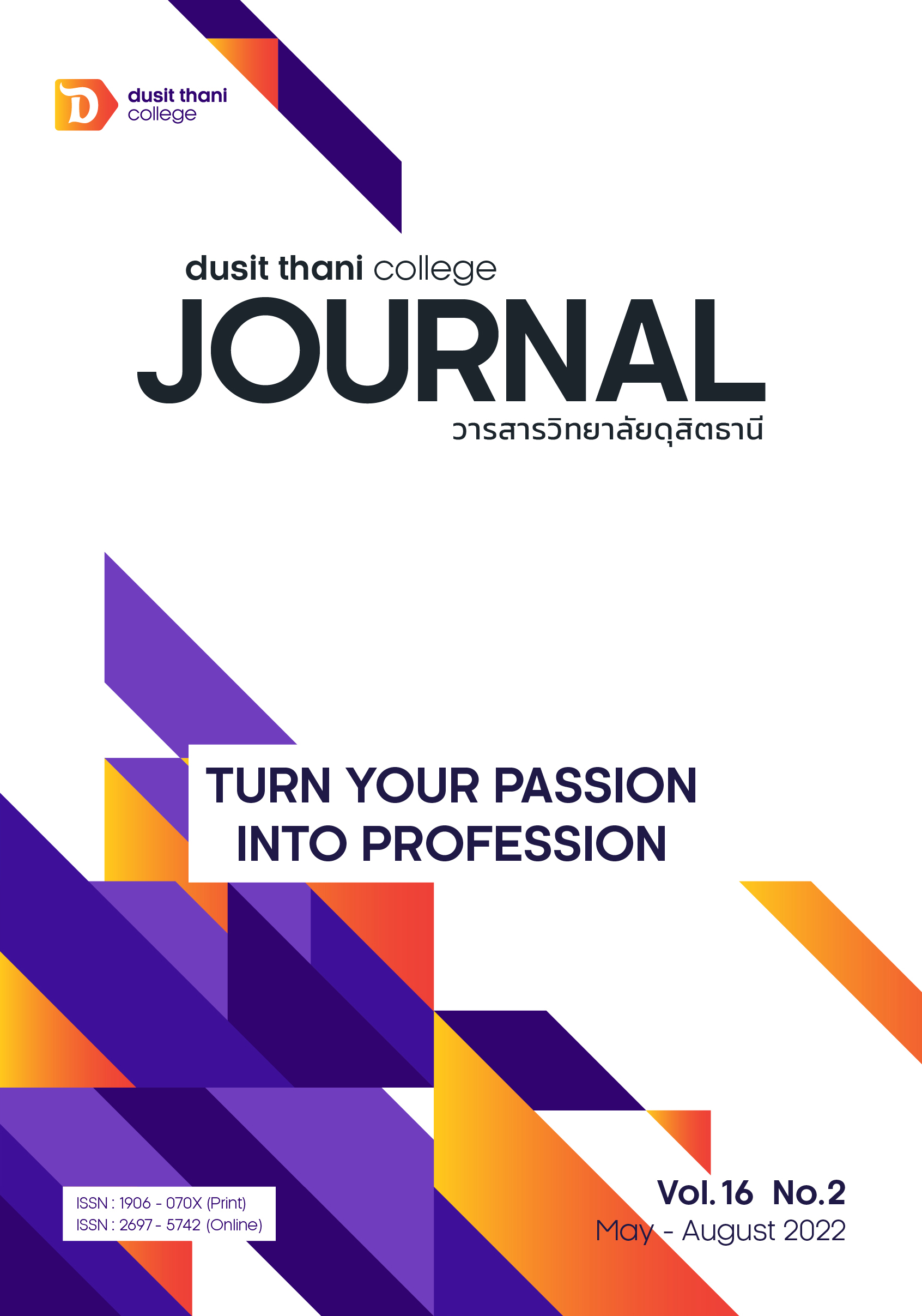The Analysis of Tourists Behavior and Marketing Mix on Raman Cultural Tourism among the Provinces of the Chao Phraya Basin
Main Article Content
Abstract
Abstract
This research aims 1) to study Thai tourists’ behavior on Raman cultural tourism, among the Provinces of the Chao Phraya Basin, 2) Thai tourists’ opinions on the significant effects of marketing mix on Raman cultural tourism, 3) to analysis the relationship between demographic characteristics of Thai tourists and their behaviors on Raman cultural tourism, and 4) to compare Thai tourists’ opinions on the significant effects of the marketing mix on Raman cultural tourism according to their demographic characteristics. Participants of this research were 400 Thai tourists who traveled in Raman cultural tourist attractions, among the Provinces of the Chao Phraya Basin. The data statistics were achieved using frequency distribution, percentage, mean and standard deviation. Therefore, Chi-square, t-test, and one-way ANOVA were applied for testing the hypotheses. The results show that 1) Thai tourists who traveled in Raman cultural tourist attractions, among the Provinces of the Chao Phraya Basin aimed to travel for relaxation. The majority often traveled with friends on Saturday and Sunday. Each group consisted of 3-5 people. Their average travel costs were less than 1,000 baths, and their travel frequencies were more than one time in three months. 2) Thai tourists’ opinions on the significant effects of the marketing mix on Raman cultural tourism, among the Provinces of the Chao Phraya Basin were high. 3) Gender did not affect the relationship between Thai tourists’ demographic characteristics and their behaviors on Raman cultural tourism, among the Provinces of the Chao Phraya Basin. 4) The different demographic characteristics of Thai tourists did not affect their opinions on the significant effects of the marketing mix on Raman cultural tourism, among the Provinces of the Chao Phraya Basin. However, there was statically significant difference in term of tourist attractions in different provinces with a statistically significant at 0.05.
Article Details

This work is licensed under a Creative Commons Attribution-NonCommercial-NoDerivatives 4.0 International License.
Article Screening Policy
- All research and academic articles to be published must be considered and screened by three peer reviews in the relevant field / article.
- All articles, texts, illustrations and tables published in the journal are the personal opinions of the authors. Editors don't always have to agree. And no responsibility whatsoever is the sole responsibility of the author.
- The articles to be published must never be published. Where did you first publish? And not in the consideration of other journals If the audit found that there has been a duplicate publication It is the sole responsibility of the author.
- Any article that the reader sees as being plagiarized or impersonated without reference. Or mislead the work of the author Please let the journal editor know it will be your greatest blessing.
References
Akakul, T. (2008). Action Research. Ubon Ratchathani: Yongsawat Intergroup.
Bob, M. and Hilary D. C. (2002). Cultural Tourism: The Partnership Between Tourism and Cultural Heritage Management. New York: The Haworth Hospitality Press.
Bywater, M. (1993). The Market for Cultural Tourism in Europe. Travel and Tourism Analyst, 6, 30-46.
Fay, B. (1992). Essentials of Tour Management. New Jersey: Prentice-Hall, Inc.
Kanchula, C. (2021). Factors Affecting the Decision to Travel to Secondary Cities of
Thai Tourists. A Case Study of Ang Thong province. Journal of Tourism Sustainable Management Vol. 2 No. 2 (2020): 2020 Vol.2 Issue 2 July – December. 64-80.
Kotler, P. Bowen, J. and Makens, J. (1996). Marketing for Hospitality and Tourism. New Jersey: Prentice-Hall Inc.
Likitsarun et al. (2018). The Level of Tourist’s Opinion on the Use of Marketing Mixed Factors for the Tourism Management in Phichit Province, Thailand. Journal of Hospitality and Thai Tourism. Vol.13 No.2 July – December 2018. 25-36.
Phumiworramunee, S., Wongmonta, S. and Techakana, J. (2019). Guidelines for the Promotion of Cultural Tourism Marketing in Nakhon Phanom Province. Dusit Thani College Journal. Vol.13 No.1 January - April 2019.184-201.
Sara, D., Amata, R. (2014). Tourism marketing research: Past, present and future. Annals of Tourism Research. Volume 47, Pages 31-47, Retrieved from http://www.sciencedirect.com/science/article/pii/S0160738314000358.
Schiffman, L. G., & Kanuk, L. L. (2003). Consumer behavior. Upper Saddle River, NJ: Prentice Hall.
Schliesinger, J. (2001). Tai Groups of Thailand. Volume 2: Profile of the Existing Groups. Bangkok: White.
Uthayan, C. (2020). Tourists Behavior. Retrieved fromhttps://touristbehaviour. wordpress.com.
Wongthet, W. (1993). Local historical of the Mae Klong Basin : case study of Mon community in the Mae Klong basin Ban Pong District Ratchaburi Province socio-cultural development. Pickaness Printing Center Co., Ltd: Bangkok.


